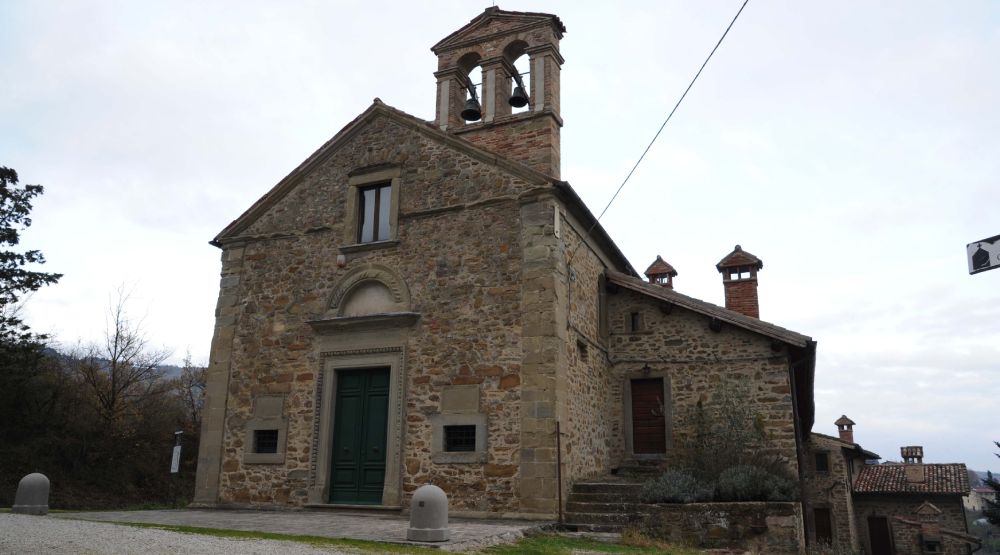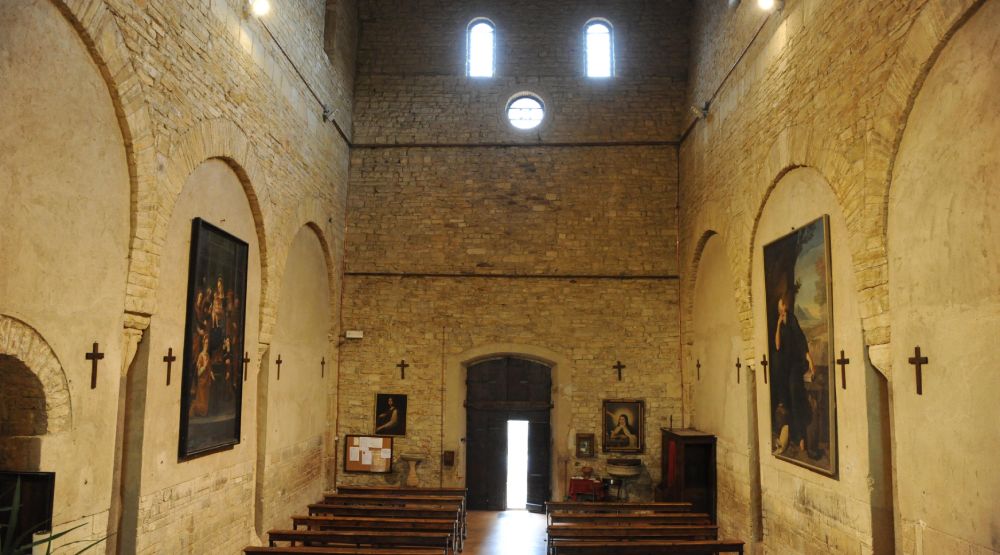The Abbey, originally part of a Benedictine abbey complex, is recorded for the first time in a document of 972.
Ugo, founder of the Abbey of Petroia, belonged to the family of Marquises del Colle, that gave origin to the branch of Bourbon del Monte. The family's protection of the monastery lasted until the 15th century; in 1403 the protection of the religious complex passed to the sovereignty of Città di Castello.
The Abbey of Petroia represents one of the most important Romanesque buildings of the region. Ecclesiastical affairs involving it and the disruptions caused by the frequent earthquakes have left their marks in the architecture, in the several adaptation actions and in the gradual decrease of spaces that altered its original aspect. The building, among the first examples in Umbria of a church-basilica with three aisles and three apses, had a longitudinal plan with a roof covering and a non-protruding transept, raised on a wide crypt. According to a custom widespread in the monastic communities, the church used to have three different floor levels, in accordance with the spaces reserved during the liturgical functions respectively to the faithful, monks and the officiating clergy. Currently the church appears to be reduced by about one third and without the side aisles, used for some time for agricultural purposes and as residential houses.
The facade of the current church is made up of a wall built in the 14th century, raised because of the various earthquakes that damaged the building on multiple occasions. The terracotta tiles with geometrical and zoomorphic patterns inserted on the external side of the wall, influenced by the Ravenna art, certainly come from a more ancient construction. The church also contains a comprehensive repertoire of erratic material from the early-medieval and Romanesque epoch.
Under the presbytery is the wide triapsidal crypt, attributable to the mid-eleventh century, divided into three adjoining rooms covered by cross vaults, resting on six columns and two pillars. The crypt, currently not open, had originally two entrances, located in the side aisles. Capitals and bare columns were used for its construction: these latter ones are made of travertine and granite, whereas the original columns, of pre-Romanesque era, were built of sandstone.
After Petroia, continue for another 6 km along the provincial road leading to Castiglion Fiorentino and Cortona, to reach Morra, a hamlet in the municipality of Città di Castello. In the village square is the Parish Church of St. Mary, already recorded in a Bull of 1126 and in a treaty between Perugia and Città di Castello. The oratory of St. Crescentino, a fundamental stage of the Signorelli’s itinerary in the territory of the Upper Tiber Valley, stands outside the village centre.





























